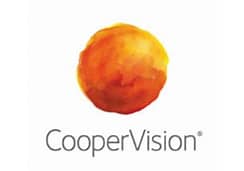

The research sought to compare the quality of life (QoL) among 49 children (aged 9-17 years) and 48 adults (aged 18-26 years) who currently use ortho-k, soft contact lenses, or spectacles for myopia. Participants scored across several categories including symptoms, vision, activities, appearance, peer perception, handling and overall satisfaction. Results indicate that across the board, both children and adults agreed that there are perceived significant benefits to using ortho-k lenses during physical activity.


“The QoL study supports that ortho-k contact lenses offer appealing advantages for those who lead more active lifestyles,” said Leah Johnson, OD, FAAO, FSLS, Director of Professional Affairs, CooperVision Specialty EyeCare. “The results of this work reinforce the opportunity for eye care practitioners to take a more proactive approach in discussing ortho-k benefits with patients who are active in sports or other physical activities.”
The study also evaluated parents’ perceptions on how they believed their children would respond—a first-of-its-kind proxy assessment. The results suggest while activity-driven children did perceive the benefits of orthokeratology, parents have an even greater affinity for contact lens use in active lifestyle situations, for easy handling and for appearance when compared to spectacles. This insight should help eye care professionals feel more confident when discussing, fitting and prescribing soft contact lenses or ortho-k for myopia management in pediatric patients.
This study was supported by NIH-NEI T35 and P30 (EY007099, EY007551, PI Laura Frishman). CooperVision Specialty EyeCare provided unrestricted grant support for subject reimbursement.
Patient and Parent Perceptions of Myopia Modalities (Lattery LJ, Chao C, Walline, JJ, et. al) is available for subscriber download here.



